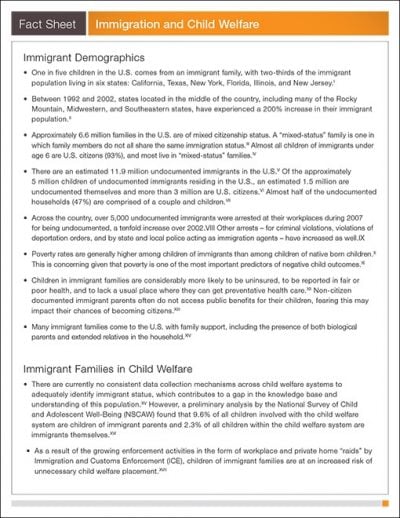Concentrated Geographic
20% of children in the U.S. come from an immigrant family, and two-thirds of the immigrant population lives in six states: California, Texas, New York, Florida, Illinois and New Jersey.

Child welfare jurisdictions across the country can benefit from understanding the demographics and needs of children of immigrant parents. This fact sheet summarizes not only the data on immigrant demographics, but shows the trends of immigrant families from the lens of child welfare, and presents policy recommendations that can help to equip welfare programs with the tools that best serve this growing demographic.
Numerous child welfare jurisdictions across the country can benefit from technical assistance to support capacity building efforts to better serve the needs of this community and address the legal, trans-national and practice implications of this growing and unique population. Immigrant children and children from immigrant households are less likely to be living in relative foster care, and more likely to be living in group homes and institutions as compared to their U.S. born counterparts. They are also more likely to have a case goal of independent living or long-term foster care.
We hope you'll find value in this report. We’d love to get a little information from you, which we'll use to notify you about relevant new resources.